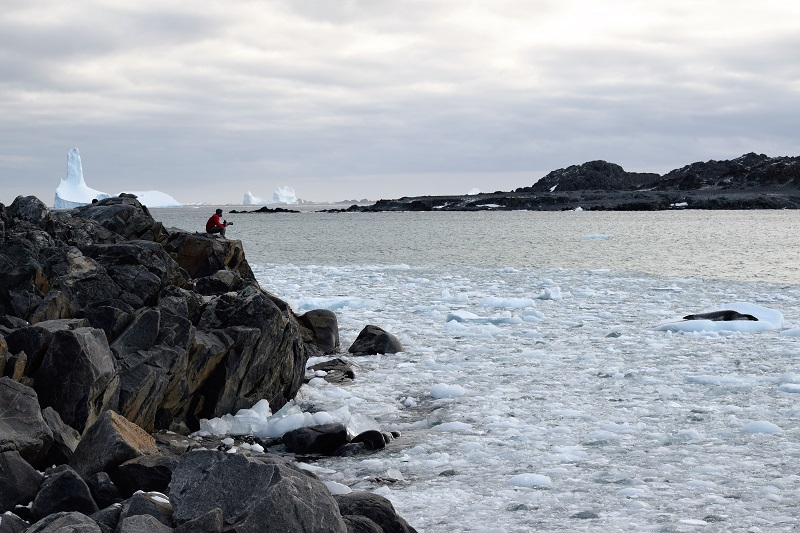
Naturalist = Student of natural history (the scientific study of observations of plants and animals).
Antarctica = The earth’s southernmost continent. Also, one of the most remote and pristine habitats dominated by natural flora and fauna and virtually untouched by humans.
One of the main reasons why I chose Dr. Jim McClintock’s lab to pursue my PhD is his dedication to science literacy through public outreach. One of his most unusual and effective forms of outreach is his books two books, Lost Antarctica and A Naturalist Goes Fishing. As these books were a key portion of the decision that led me on the path to Antarctica, I feel it is appropriate for the subject of my final blog for the season to be about my experience as a naturalist here in Antarctica.
Before we even made it into the Drake Passage, we were already treated to breathtaking views of dolphins, Magellanic penguins (endemic to the subantarctic waters off the southern tip of South America), and lots of pelagic birds like albatrosses!

Once we were further south into Antarctic waters, penguins became a more predominant fixture in our wildlife viewing experience. Since we were headed down in the summer, chinstrap penguins were the most predominant species along with the occasional raft of Adélies on an ice floe.

In the final stretch towards our new home, we were treated to views of over 300 humpback whales during one evening in the Gerlache Strait.

Arrival on station meant that it was time to explore and get to know all of the local wildlife! On our first night, CJ, Andrew, Bill, and I hiked up the top of the glacier to take in the view. On our way back down to station we came across our first “up close” seal – the beautiful Weddell seal pictured below!

Since then we have had the opportunity to see each of the other common seals in the area. Leopard seals (top left) tend to stick to ice floes and coastlines. They are the most aggressive seals in the water and the ones that we keep an eye out for during our dives. Fur seals (top right) can usually be found in groups on the islands or playfully swimming around in the water. Crabeater seals (bottom) seem to prefer ice floes. They have specialized teeth that act to filter krill from the water. Elephant seals (not pictured here) are huge seals that are always lounging on the shoreline and are a more recent addition to the scenery.

As a birder, Antarctica has provided a very special experience for me as I’ve had the opportunity to add birds to my life list that I had previously never even dreamed of seeing. A few of the regulars around here are the brown skua (top left), sheathbill (top middle), blue-eyed shag (top right), kelp gull (bottom left), and giant petrel (bottom right).

And of course, the occasional visit by a Gentoo (left) or Adélie (right) penguin is always a welcomed sight around station!

For all of the plant lovers out there, there are two relatively inconspicuous terrestrial plants, plus a few mosses and lichens (as seen in the skua and giant petrel photos) but the majority of the plant life here is hidden by the depts of the sea. The beauty and awe-inspiring magnitude of this is best described by Chuck in his “Don’t ever let anyone tell you that there are no forests in Antarctica” blog.
Even with the experience of spending time with all of the beautiful and fascinating creatures pictured above, my absolute favorite fauna in Antarctica is the wonderful people pictured below. They have been a fantastic team to work with and have made my time here in Antarctica that much more special. I will forever cherish the lessons they have taught me and the happy memories we have formed together in this amazing place.
